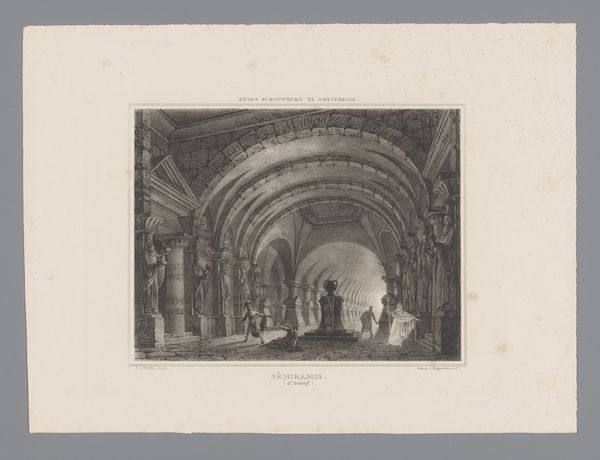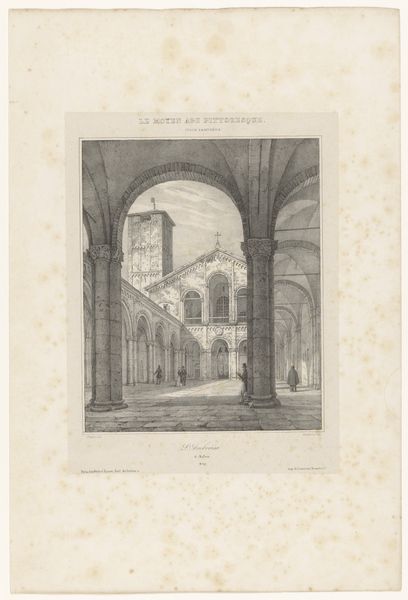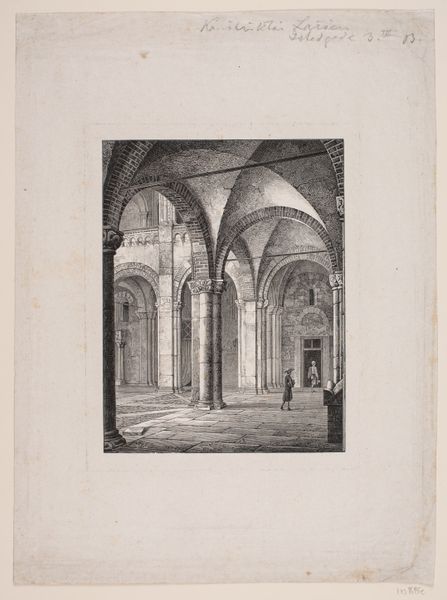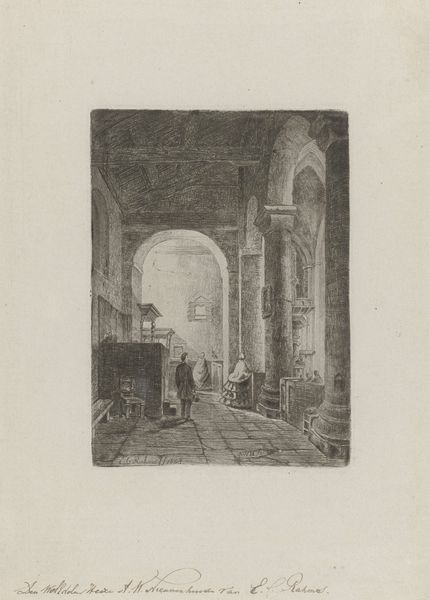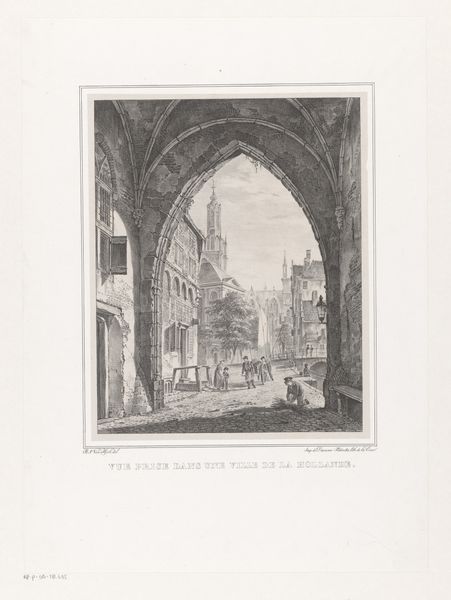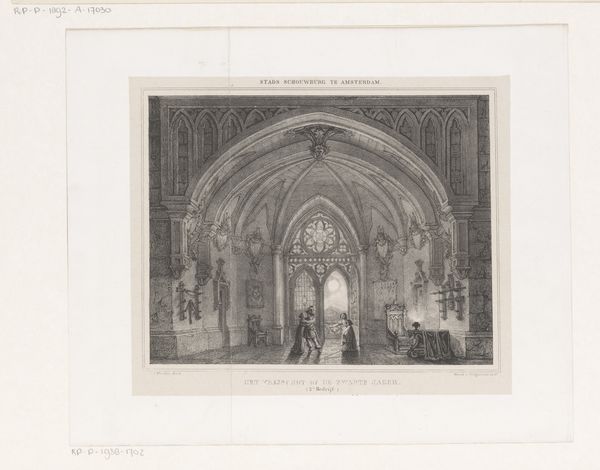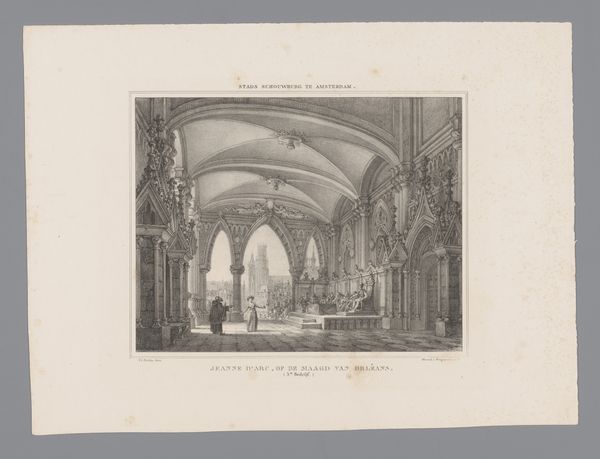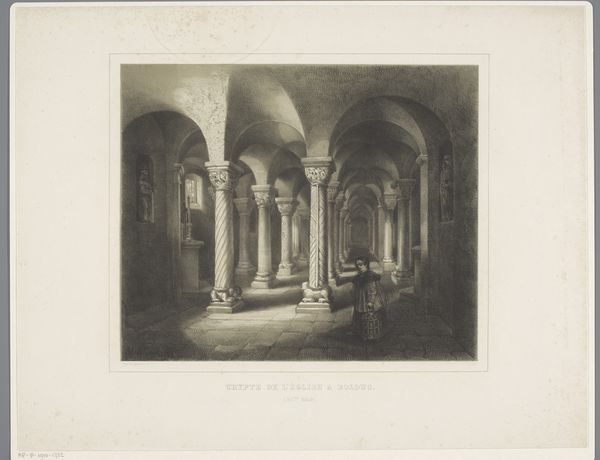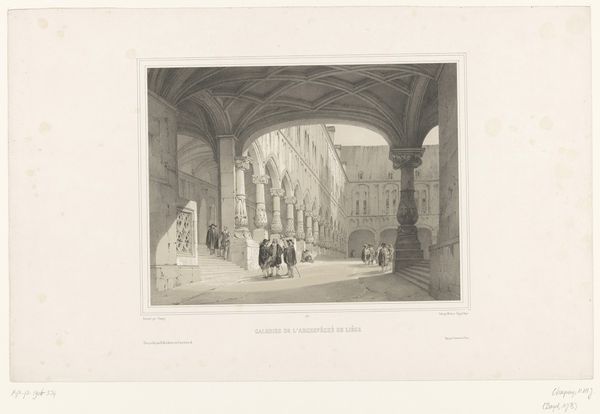
Zicht op een kloostergang van de Grossmünster in Zürich 1837 - 1839
0:00
0:00
print, engraving
# print
#
form
#
romanticism
#
line
#
cityscape
#
engraving
#
realism
Dimensions: height 299 mm, width 448 mm
Copyright: Rijks Museum: Open Domain
Editor: Here we have "View of a Cloister of the Grossmünster in Zurich," an engraving by Léon Auguste Asselineau, dating from around 1837 to 1839. The architectural lines are so precise! What strikes me most is the sense of depth, but I’m curious—what do you see when you look at this print? Curator: What grabs me is the materiality of this image. The rough texture of the stone rendered through precise engraving highlights the labor involved in constructing and maintaining these spaces. Consider the societal role of the Grossmünster. Editor: A cathedral and a center of the Swiss Reformation... so you’re thinking about the print as a product, a representation of power and religious shifts? Curator: Exactly. Think about the physical act of creating this engraving. The engraver painstakingly reproduced the architecture, essentially performing labor parallel to the stonemasons who built the cloister. It connects high art to skilled craft, doesn't it? And think about who would have consumed this image, further disseminating these religious ideologies. Editor: So, the act of making the print is as important as the image it depicts, revealing connections between craftsmanship and ideology? Curator: Precisely. And how this print circulated, reproduced and consumed would affect the development and further proliferation of the building. It's not just a pretty picture; it's part of a larger network of material production and social power. Editor: That gives me a completely different way to see this image, thank you. Curator: Absolutely, seeing art as connected to material conditions and the lives of those who produce and consume is illuminating.
Comments
No comments
Be the first to comment and join the conversation on the ultimate creative platform.
